“Who cooks for you, who cooks for you all?” This is the call of the BARRED OWL, the subject of this week’s creature feature.
When I was at Corkscrew Audubon Sanctuary recently I was lucky enough to see barred owls multiple times, including a hooting pair bold enough to mate right in front of the crowd that had run with me from one area to another. We had been keeping an eye on one of the owls high in a tree beside a pond when it suddenly flew from its perch and disappeared into the forest. Myself, Joe and another photographer named John, ran in his direction, excitedly listening to the hoots and letting them show us where he’d gone. When we got there, we spotted an owl on a branch close to the boardwalk and before I’d even had time to put my camera to my face, a second owl flew in and proceeded to mate with the first owl! This lasted less than 30 seconds–surely the definition of a “quickie!”– and then the two sat together on the branch briefly before going their separate ways. Wow, it was amazing to witness such an exciting wildlife moment!
Here are some things you many not know about Barred Owls:

1. Barred owls are not the same as BARN owls. Barn owls are whitish, have heart-shaped faces and generally live in or near barns or fields. Barred owls on the other hand have round faces, live in old forests and treed swamps, have brown and white striped feathers. They are 15-24 inches long with a wingspan of 3 and a half feet. The edges of their feathers, like all owls, are soft, allowing them to fly silently so they can sneak up on their prey.
2. Barred owls are opportunistic predators. They eat a variety of things including small mammals such as mice, squirrels, voles, chipmunks, rabbits. They will also eat small birds, reptiles, amphibians, fish and invertebrates like crayfish, millipedes, spiders etc.
3. Like most other owls, they have an excellent sense of hearing and asymmetrical ears. They have no external ears like other animals, but the small asymmetrical holes on either sides of their heads (one is higher than the other) allows them to use triangulation to pinpoint the exact location of their prey.
4. Like other owls they do not build a nest. Instead, they use abandoned nests of other animals including hawks, crows and even squirrels. Barred owls will also nest in tree cavities 20-40 feet high.
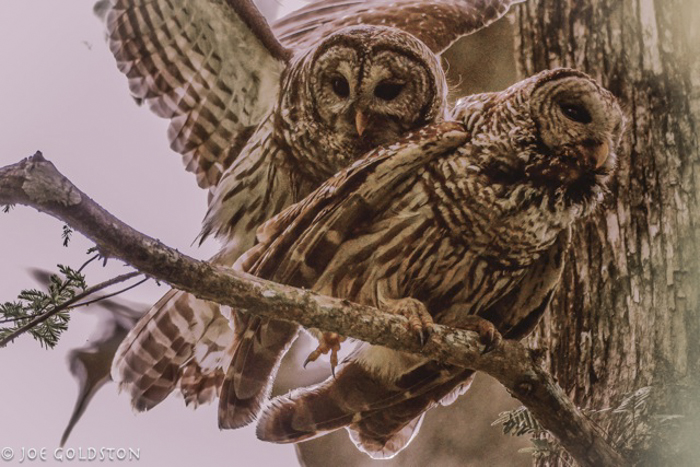 5. Barred owls are thought to mate for life and produce one brood per year. Breeding usually takes place in March with the female then laying 1-5 plain, white eggs over a period of several days.
5. Barred owls are thought to mate for life and produce one brood per year. Breeding usually takes place in March with the female then laying 1-5 plain, white eggs over a period of several days.
6. Barred owls have a distinctive call that to some, sounds like they are saying, “who cooks for you, who cooks for you all.” In the spring it is not unusual to hear them calling during the day though they are most active at night. Like other birds they will call to announce their territory–which for a barred owl is roughly 1/3 to 1 an 1/2 square miles. (85-365 hectares or 210-900 acres)
Audio PlayerBarred Owl call From Lang Elliot of Nature Sound Studio
7. While the female is incubating the eggs, the male will bring her food. She will incubate for 28-33 days. Babies will fledge (leave the nest) at 35-40 days.
8. The life span of a wild Barred Owl is on average, 10 years. Their main predator is the great horned owl. Many die from encounters with people–collisions with cars, buildings, getting shot, etc
9. Like other birds owls cannot chew their food. For smaller prey items, they will swallow it whole, for larger things they will tear it apart into smaller pieces. Owls lack the crop of other birds (A crop is a loose sac in their throats that stores food for later consumption) so the food goes directly to their digestive system. The acid in their digestive system is weak so bones, fur and feathers of their prey remain intact and are formed into what is called a “pellet.” This is a oval-shaped, grayish hard mass that is regurgitated. Dissecting owl pellets gives much insight into the diet of the owl.
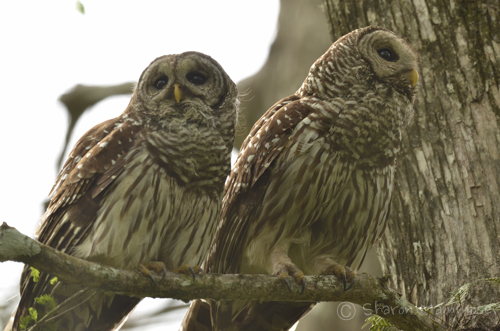 10. Contrary to popular belief, barred owls (and other owls) cannot turn their heads all the way around! This is a myth! However, since they have 14 vertebra in their necks (twice as many as mammals) they can rotate them 270 degrees, which is a lot further than most animals. Like other owls, they cannot move their eyes so turn their heads to see the world around them. Sometimes they move so quickly from one direction to another that is seems like they have turned their heads all the way around.
10. Contrary to popular belief, barred owls (and other owls) cannot turn their heads all the way around! This is a myth! However, since they have 14 vertebra in their necks (twice as many as mammals) they can rotate them 270 degrees, which is a lot further than most animals. Like other owls, they cannot move their eyes so turn their heads to see the world around them. Sometimes they move so quickly from one direction to another that is seems like they have turned their heads all the way around.
Have you ever had an exciting owl encounter??
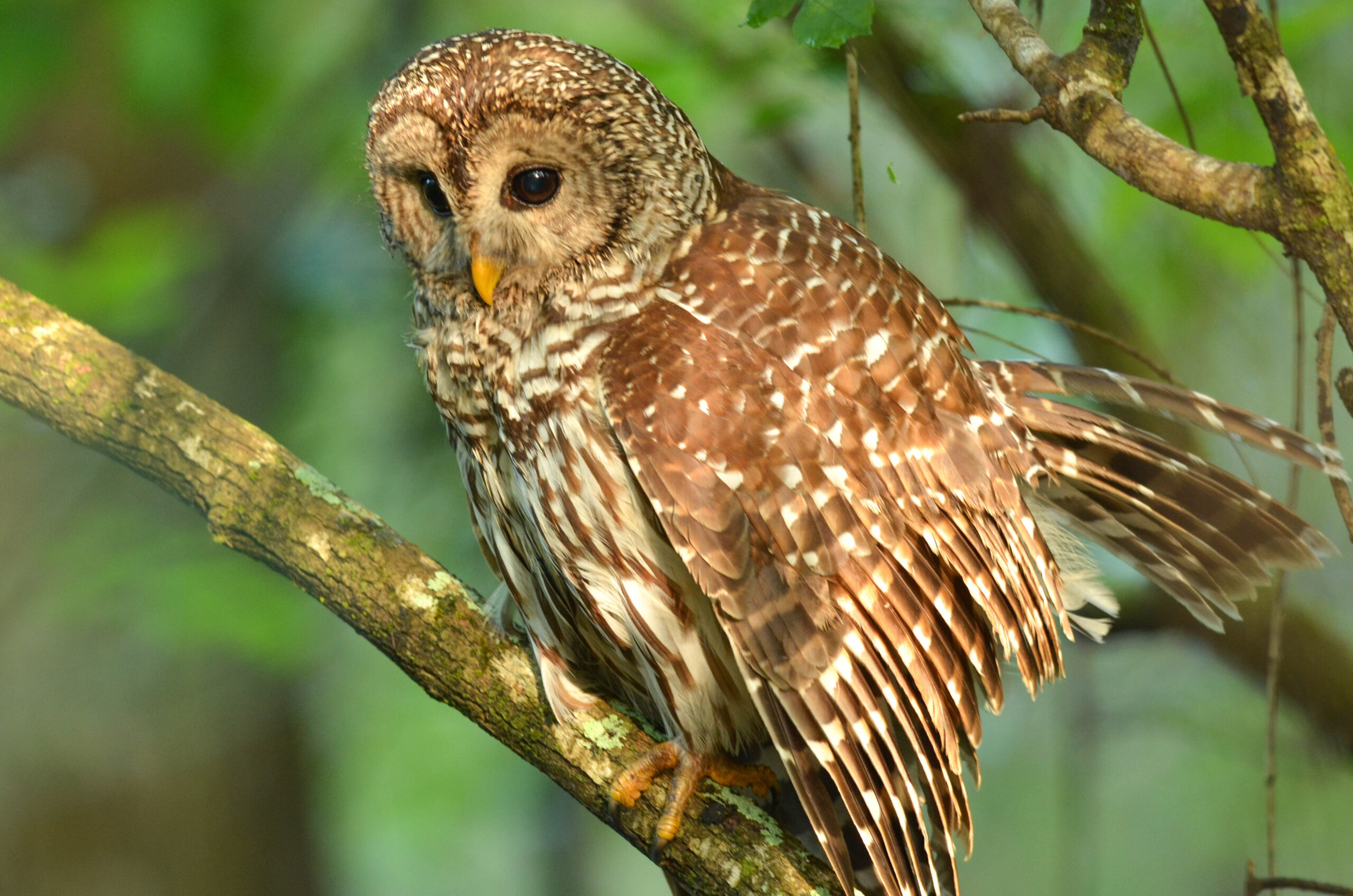
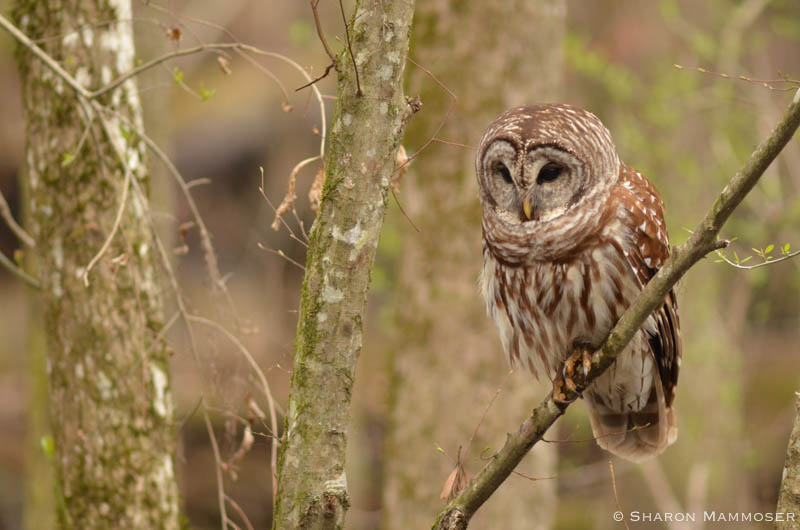
Credits:
- All about birds from the Cornell Lab of Ornithology
- Mazur, K. M., and P. C. James. 2000. Barred Owl (Strix varia). In The Birds of North America, No. 508 (A. Poole and F. Gill, eds.). The Birds of North America Online, Ithaca, New York.
- The Owl Pages

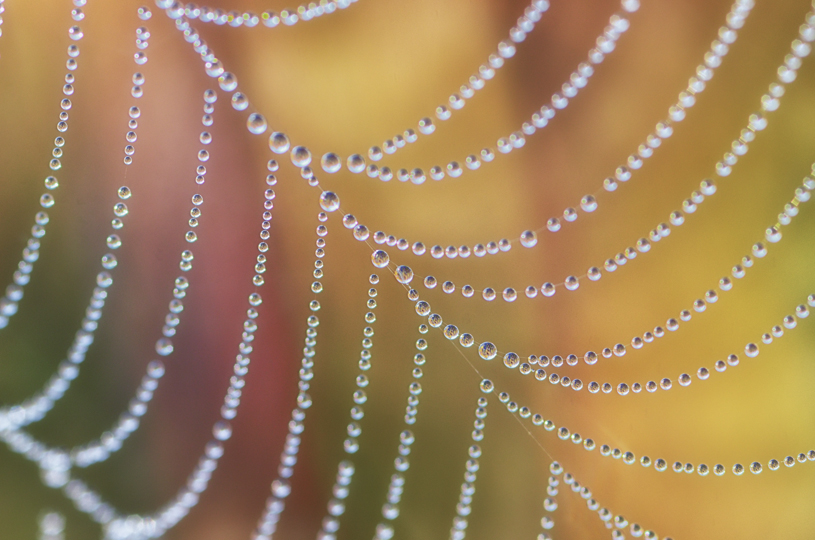
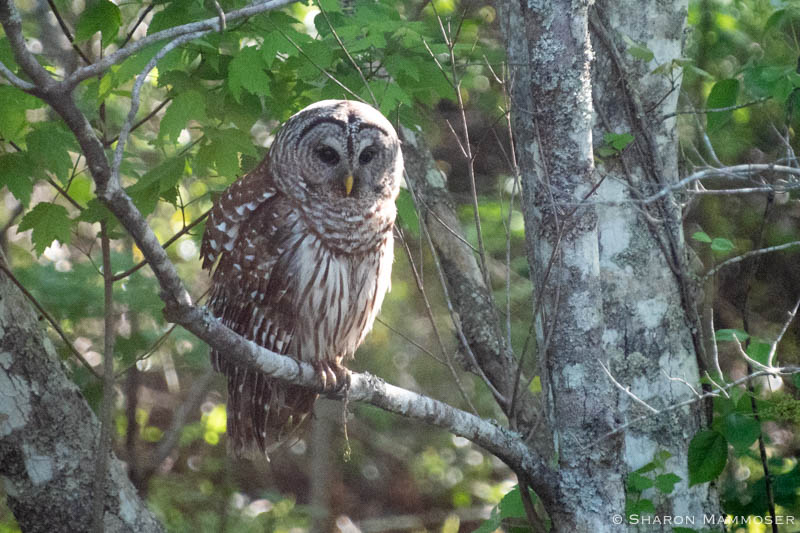
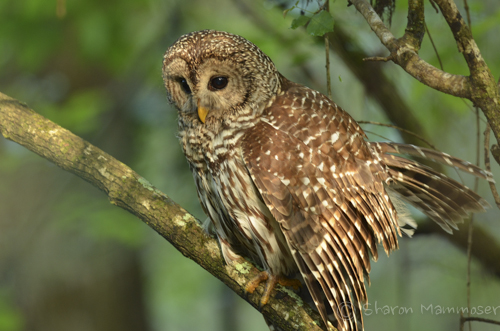
1 thought on “Who Cooks For You?: Ten Things You May Not Know about Barred Owls”
Comments are closed.